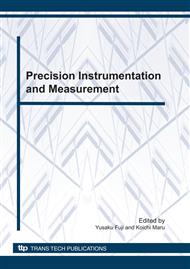[1]
Akira Morimoto, Keiko Fujita, and Ryuichi Ashino: Blind source separation using quotient signal method (Journal of Latex Class Files, Vol. 1, N0. 11, November 2002).
Google Scholar
[2]
R. Ashino, C. A. Berenstein, K. Fujita, A. Morimoto, A. Morimoto,D. Napoletani, and Y. Takei, Mathematical background for a method on quotient signal decomposition, submitted.
DOI: 10.1080/00036810701286288
Google Scholar
[3]
R. Balan and J. Rosca, Statistical properties of STFT ratios for two channel systems and applications to blind source separation, Proceedings ICA 2000, 19-22 June 2000, Helsinki, Finland.
Google Scholar
[4]
C. Cherry, On human communication, the revised edition, The MIT Press, (1980).
Google Scholar
[5]
S. Choi and A. Cichoki, Blind separation of nonstationary sources in noisy mixtures, Electron. Lett., 36-9, 848–849, (2000).
DOI: 10.1049/el:20000623
Google Scholar
[6]
S. Choi and A. Cichoki, Blind separation of nonstationary sources in noisy mixtures, Electron. Lett., 36-9, 848–849, (2000).
DOI: 10.1049/el:20000623
Google Scholar
[7]
D. Gabor, Theory of communication, J. IEE, 93, 429–457, (1946).
Google Scholar
[8]
K. Fujita, Y. Takei, A. Morimoto, R. Ashino and M. Morimoto, Blind source separation on a time-frequency space—mathematical background—, IEICE Technical Report EA2005-12, 37–42, 2005. (In Japanese. ).
DOI: 10.1016/j.amc.2006.08.172
Google Scholar
[9]
D. Napoletani, C.A. Berenstein and P.S. Krishnaprasad, Quotient signal decomposition and order estimation, TECHNICAL RESEARCH REPORT of University of Maryland, http: /www. isr. umd. edu, TR 2002-47.
Google Scholar
[10]
A. Jourjine, S. Rickard and O. Yilmaz, Blind separation of disjoint orthogonal signals: Demixing n sources from 2 mixtures, Proceedings IEEE International Conference on Acoustics, Speech and Signal Processing, 5-9 June 2000, Istanbul, Turkey, IEEE Press, (2000).
DOI: 10.1109/icassp.2000.861162
Google Scholar


